 |
| A man prepares to vote in Caserío Tui Bul. Graham Hunt Un hombre se prepara para emitir su voto en el Caserío Tui Bul. |
On March 16, 2011, 17,849 residents of the predominantly Maya Mam municipality of San Martín “Chile Verde” Sacatepéquez, Quetzaltenango, added their voices to those of the roughly 600,000 people across Guatemala who have rejected the imposition of mining and hydroelectric megaprojects in their communities in more than 50 good faith community referenda. As reported in La Prensa Libre, an undisclosed company planning to build a hydroelectric plant in the area approached the municipal government for authorization; in response, the municipal mayor, Martín Vásquez, decided to place the decision in the hands of the population. 63 people voted in favor of allowing mining and hydroelectric companies to operate in the municipality.
El 16 de marzo, 2011, 17 849 residentes del municipio mayoritariamente maya mam de San Martín “Chile Verde” Sacatepéquez, Quetzaltenango,sumaron sus voces a las de unas 600 000 personas de Guatemala quienes han rechazado la imposición proyectos hidroeléctricos y mineros en sus communiidades a través de más de 50 consultas comunitarias de buena fe. Como se reportó en La Prensa Libre, una compañía, cuyo nombre no fue publicado, con planes de construir una planta hidroeléctrica en el área, hizo un acercamiento al gobierno municpal para pedir autorización; en respuesta, el alcalde municpal, Martín Vásquez, decidió dejar la decisión en las manos de la población. 63 personas votaron a favor de dejar a compañías mineras e hidroeléctricas operar en el municipio.
 |
| A member of the auxiliary mayor’s office looks on as residents vote in Caserío Tui Bul. Graham Hunt Un miembro de la alcaldía auxiliar observa mientras residentes emiten su voto en el Caserío Tui Bul. |
 |
| Graham Hunt |
The referendum was carried out in the midst of growing national tensions regarding an initiative by the central government to regulate community referenda in Guatemala. During the unveiling of the initiative on February 23, 2010, the government announced that civil society organizations would have 30 working days to submit revisions to the proposed legislation. As reported in a previous post on this blog, organizations and communities from around the country have rejected the government’s present attempt to regulate community consultations, denouncing that the proposed legislation was redacted at the behest of business interests and without the participation of the communities to be affected.
La consulta se llevó a cabo entremedio de tensiones nacionales crecientes en torno a una iniciativa del gobierno central para regular las consultas comunitarias en Guatemala. Durante el desvelo de la iniciativa el 23 de febrero, 2010, el gobierno anunció que las organizaciones de la sociedad civil tendrían 30 días hábiles para entregar sus revisiones a la legislación propuesta. Como se reportó en una entrada previa a este blog, organizaciones y comunidades de muchas zonas del país han rechazado el intento del gobierno de normar las consultas, denunciando que la legislación propuesta fue redactada a instancias de la empresa privada y sin la participación de las comunidades que serían afectadas.
 |
| A community leader from Cabricán, Quetzaltenango, spoke to the public in Lablatzán. Graham Hunt Una lideresa comunitara de Cabricán, Quetzaltenango, impartió un mensaje al público en Lablatzán. |
 |
| Observers and volunteers eat lunch in San Martín’s market. Graham Hunt Observadores y voluntarios almuerzan en el mercado de San Martín. |
 |
| A resident votes in the center of San Martín. Graham Hunt Un residente vota en el centro de San Martín. |
 |
| Community mayors oversaw the voting in central San Martín. Graham Hunt Alcaldes comunitarios custodiaban las votaciones en el centro de San Martín. |
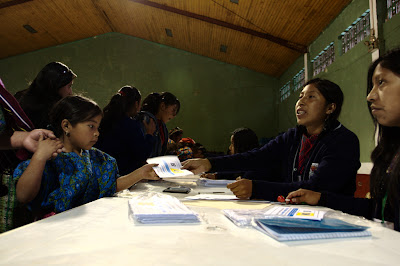 |
| A young voter receives her ballot in central San Martín. Graham Hunt Una votante joven recibe su papeleta en el centro de San Martín. |
 |
| Graham Hunt |
 |
| Residents and visitors were invited to leave messages for the people of San Martín. Graham Hunt A residentes y visitantes se les invitó que dejaran un mensaje al pueblo de San Martín. |
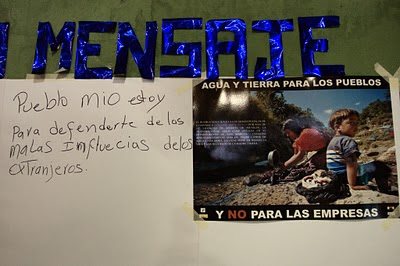 |
| Graham Hunt |
 |
| A delegation from the Council of Elders of San Juan Ostuncalco visited San Martín. Graham Hunt Una delegación del Consejo de Ancianos de San Juan Ostuncalco visitó a San Martín. |
 |
|
| A member of the Council of Elders of San Juan Ostuncalco speaks to the public. Graham Hunt Una representante del Consejo de Ancianos de San Juan Ostuncalco se dirige al público. |
 |
| A soccer game in the central plaza of San Martín. Graham Hunt Un partido de futból en la plaza central de San Martín. |
.

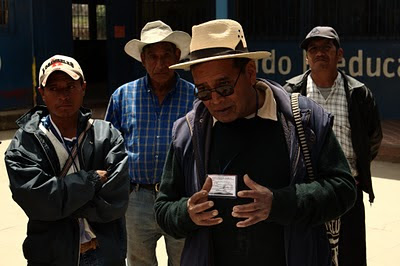




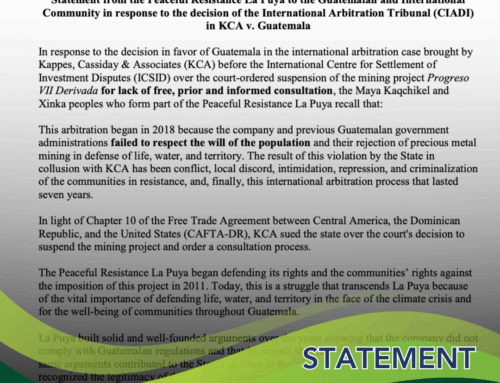
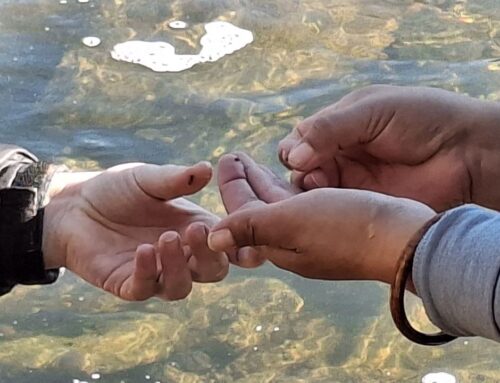
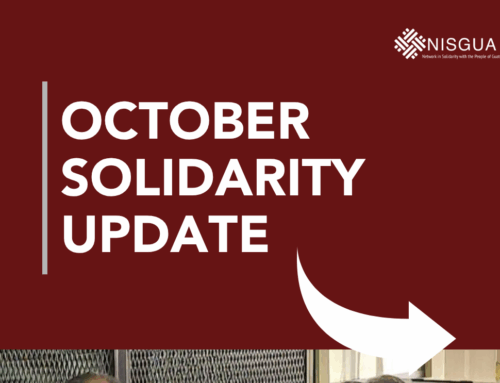
Leave A Comment